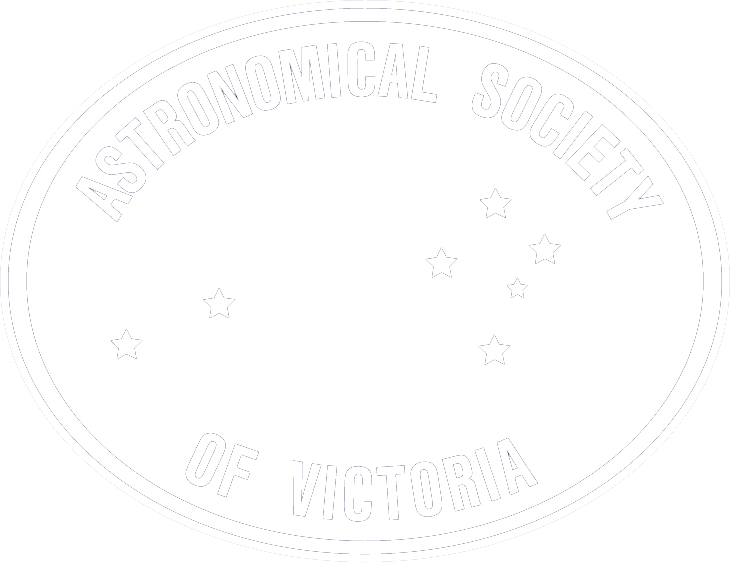LMRO DISH
The 8.5 meter ASV Dish
The 28 foot aluminium dish was built in the 1970's by D.S. Kennedy & Co. in the USA and purchased by the Australian Goverment for radio communications testing across Bass Strait. In all about ten were bought. The dish was originally designed as a transportable antenna erected on a site and manually adjusted. Once testing was completed the Dish could be disassembled, loaded on a truck and taken to another location. After testing was completed The Australian Government sold the ten dishes and they were bought for scrap. Several were bought and kept in storage or travelled around the country (ours went to Tasmania at one time). The image on the right shows Doug VK3UM with his sister dish to ours. Doug passed away in February 2016 and was greatly respected by the Radio Amateur community. Our dish was located on a country property in Victoria and the ASV purchased it in February 2013 from its owner, Rod Letts. We picked up the Hub and twelve petals on a tandem trailer and moved it to the LMDSS site. |
As the original design of the dish had no pointing or control hardware we would need to come up with our own method of control. We intended for our Dish to be a high quality scientific instrument that could be pointed at any part of the sky and track objects. To do this we had to design and construct a cylindrical steel tower with concrete foundation. The foundation consists of a bolt cage made up of 36 threaded steel bars and positioning rings placed in the four meter square by 1 meter deep hole. The concrete pour was completed and levelled. Once the concrete had set only the 36 bolts were visible along with the four orange cable conduits. To provide power and signal cable runs a series of four access pits are located around the outer edge of the foundation. The pits are the feedpoints for cable runs from the science lab. |
On top of this was mounted a bearing allowing the Dish to rotate 360 degrees. The bearing has teeth that mesh with a drive sprocket on a gearbox and motor to rotate the Dish. On top of the bearing is a hinged mounting plate with a 'Jacking Screw' to tilt the Dish from Horizon to Zenith. A drive motor and gearbox actuate the Jacking Screw. The Dish central hub is mounted to the hinged plate. The Dish is made up of twelve petals mounted to the central hub. On the outer edge of the Dish are three fiberglass struts that support the focal ring. At the focal point we have designed a large cabinet that contains the receiver electronics. |
Why do we use Radio Astronomy to look at the sky? While a Dish Antenna can be used for many purposes and many frequencies, one important use is to observe the sky at the frequency of neutral hydrogen, 1.42 Gigahertz. Hydrogen is one of the most abundant atoms in our Universe. All other particles were produced by the internal processes of Stars. When the electron orbiting a Proton in Hydrogen flips its spin state a photon is produced. This photon is received at 1.42 Ghz. Each Hydrogen atom emits an extremely weak amount of energy but with so many Hydrogen atoms in our Universe it can be received by fairly simple equipment. Even a 2 meter dish can capture enough to be detected by a receiver. When we look at the sky with a Radio Dish we see areas of weak and strong Hydrogen emissions. We detect the density of Hydrogen clouds. Most of what is observable is from our own Galaxy, the Milky Way. Sections of our Galaxy are moving away or toward us. By using the Doppler Effect where radio waves moving toward us are higher in frequency and those moving away are lower in frequency we can see how our Galaxy rotates. The following Youtube video is a great resource on this topic. |
Mapping The Sky With Radio Astronomy
Our Dish Tracking The Night Sky
The following video was produced during testing of the Dish control system. By pointing the Dish at different places in the sky we can observe an object over a long period of time using 'Integration'. By taking multiple observations and processing them we can get more information of the object being observed. This is similar to Astro Photography when multiple images of an object is 'stacked' to get a much sharper image.
Constructing The Dish
In 2017 we worked on the Dish foundation. A hole four meters square and 1.2 meters deep was excavated. A 'Bolt Cage' was constructed and concrete was delivered. When the Dish tower was completed it was mounted to the foundation bolts. Eventually the Dish itself was placed on the tower. Power cables and wiring were installed through underground conduits. The radio receiver cabinet was mounted at the focal point of the Dish to receive radio signals.
- Home Page
- Sections
- Radio Astronomy
- LMRO Dish
